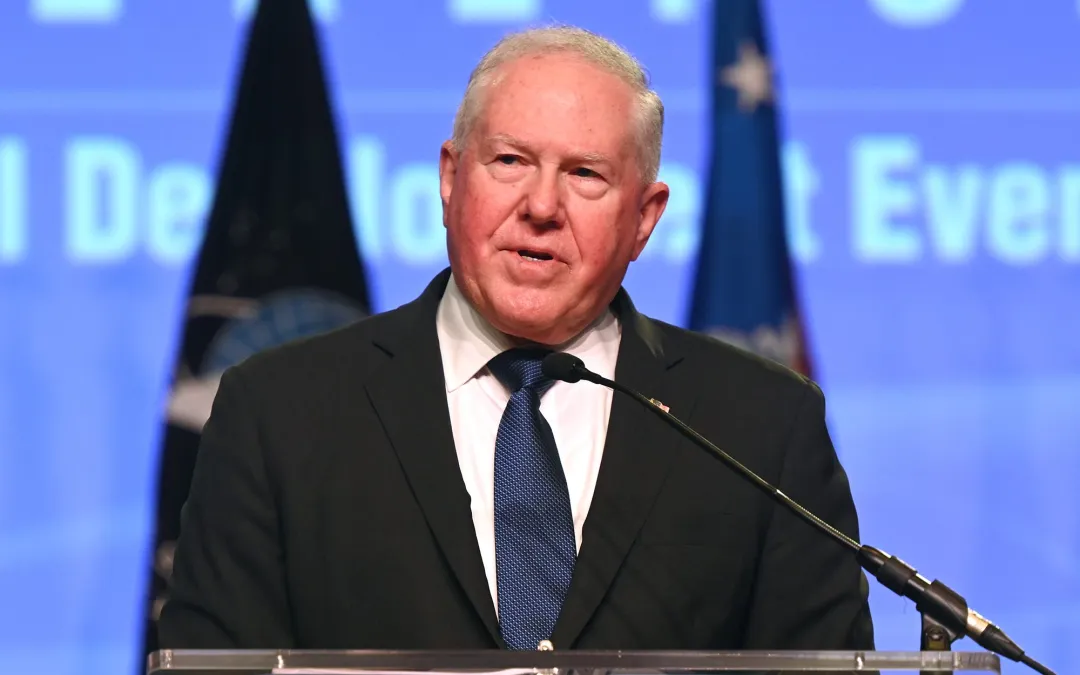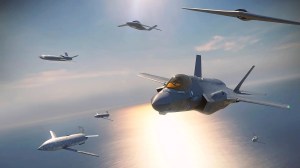Kendall introduces sweeping changes to ‘reoptimize,’ modernize Department of Air Force

AURORA, Colo. — Secretary of the Air Force Frank Kendall unveiled his plans to reorganize the department he leads in order to boost overall readiness and ensure the Air and Space Forces have the right capabilities to combat U.S. adversaries — an effort known as Reoptimizing for Great Power Competition.
During the annual AFA Warfare Symposium on Monday, he and other top officials outlined a total of 24 changes that will be part of the initiative. Those changes include near- and long-term action items that have been divided into four categories: develop capabilities, project power, generate readiness and develop people.
“We need organizations focused on the readiness of the current force and we need organizations that are focused on the future and ensuring that we have enduring competitive advantages. And we need an efficient and effective pipeline of technologies flowing continuously into more competitive capabilities for our highest priority missions,” Kendall said during his opening remarks at the conference. “In short, we need to transition to a great power competition-focused enterprise and we need to do it now.”
Kendall first announced that he had initiated a broad review of the Department of the Air Force — which includes both the Air Force and Space Force — and its organizational structure in September. During that time, he emphasized the goal of the review was to identify changes that the DAF needed to make to be prepared to fight China’s advancing military capabilities, as well as those from other U.S. adversaries.
While the 24 action items introduce a range of changes for the department — including how it trains airmen and guardians; the way the Air and Space Forces hold exercises; and the structure of Air Force operational wings and Space Force combat squadrons — a significant portion are directed towards developing and fielding new technologies.
To drive modernization efforts across the Air and Space Forces, the department will stand up a new Integrated Capabilities Office that will lead development and resource prioritization efforts of new tech.
The office will be “looking at capabilities across our services, not in stovepipes,” Kristyn Jones, acting undersecretary of the Air Force, said at the conference. “This organization will help us to prioritize our investments and will be responsible for working with us to determine the next iteration of operational imperatives.”
At the same time, the Air Force is establishing a separate Integrated Capabilities Command. The new institutional command will be led by a three-star officer and will primarily develop new competitive operational concepts, integrated requirements and modernization plans that align with future force designs.
This will allow other major commands — such as Pacific Air Forces or U.S. Air Forces in Europe and Air Forces Africa — to focus less on capability requirements and instead on overall readiness of their units, said Chief of Staff of the Air Force Gen. David Allvin.
“This is where the operators will test operational concepts against our force design,” Allvin said. “They will also ensure that when we have modernization initiatives, those are rationalized to ensure our current force gets to the future force in a way that makes sense so we do not unintentionally put modernization on platforms that really don’t have a long-term play in the future force design and waste money.”
The Air Force will also create a new Information Dominance Systems Center as part of a larger reorganization of Air Force Materiel Command that will boost the service’s focus on a number of high-tech capabilities, including command, control, communications and battle management (C3BM); cyber warfare; electronic warfare; information systems; and enterprise digital infrastructure.
The Space Force is also getting a new field command, dubbed Space Futures Command. Chief of Space Operations Gen. Chance Saltzman explained that the organization will consist of three centers: one that works to evaluate future threat environments, another that will develop and validate warfighting concepts, and a third that will conduct data-driven analytics on mission area designs.
“We’re going to take all those together and that’s going to inform our objective force — the force design,” Saltzman said. “What is it that the Space Force is going to need now in the near term, and in the long term to maintain that competitive endurance?”
Now that these and other action items that are part of the reoptimization have been identified, the Department of the Air Force will iron out how it plans to implement the changes, Kendall said. All 24 initiatives have a timeline for planning and execution that range from immediate to more than a year, and the department is looking to minimize disruption in both cost and readiness as it moves out on the plan, he said.
“There is no time to waste. We are going to turn this enterprise and point it directly at our most challenging threat,” Kendall said. “We are going to follow through on the decisions we are announcing today, and we are going to do so with a strong sense of urgency.”






